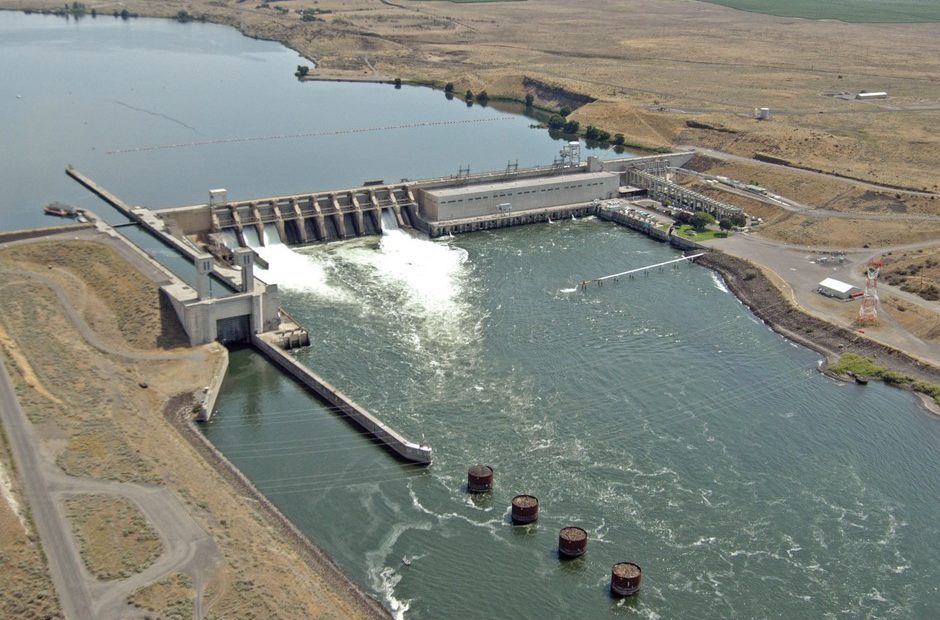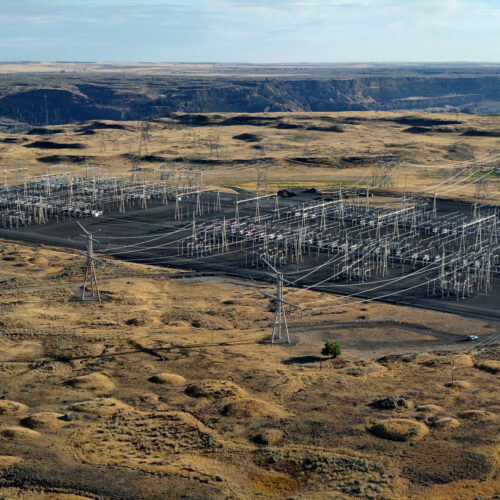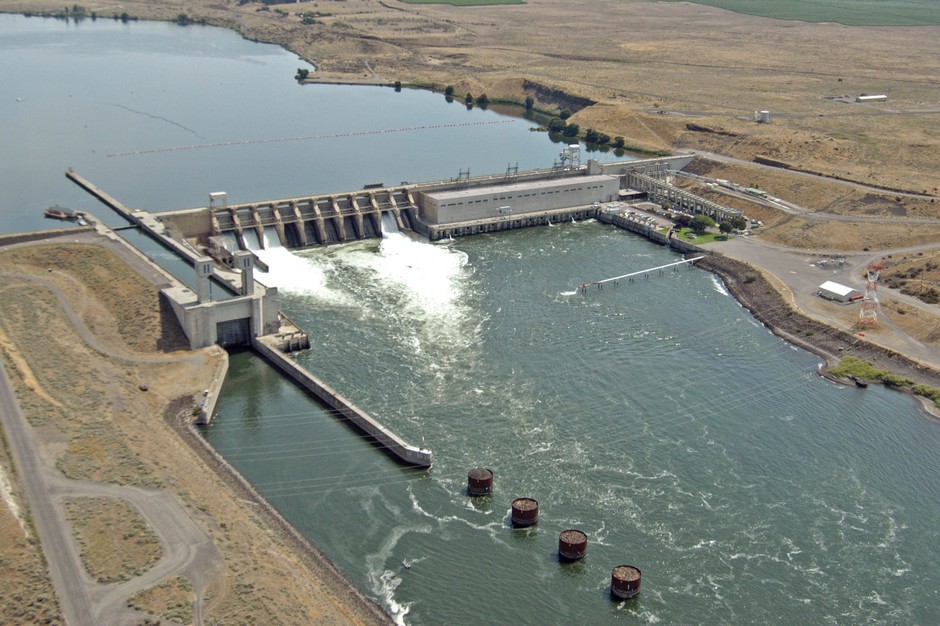
Study: It’s Possible To Replace Snake River Dams With Renewable Energy
Lower Snake River dams could be replaced by a variety of renewable energy resources, according to a new study by the NW Energy Coalition.
The advocacy group says this means dam removal doesn’t have to be a choice between salmon and renewable energy.
Many hydropower supporters say removing the four Lower Snake River dams could mean more of the Northwest’s power generation would have to come from fossil fuel sources, like natural gas.
That’s not what the coalition’s study found. Coalition spokesman Sean O’Leary said it’s important to be able to take energy generation questions off the table when considering how to protect endangered and threatened Snake River salmon runs.
“We’re driving salmon, and ultimately orca whales, to extinction and dams are a key part of that trend that we’re trying to reverse,” O’Leary said during a news conference. “As an organization, we support clean energy, including clean energy from hydro. … This particular case, I think it’s just that perfect nexus of growing concern, growing crisis and other options to do something about it.”
In 2016, U.S. District Court Judge Michael Simon rejected the federal government’s plan to protect imperiled salmon and steelhead. He called for “a new approach” that looks at different alternatives to save the fish. One of the options he formally put on the table was a close study of whether the four Lower Snake River dams should be removed or altered.
Since then, the government has conducted public meetings and taken comments on the plan. It’s currently reviewing options for a draft environmental impact statement that is expected to be finished by March 2020.
One major issue dam supporters and dam removal advocates have debated is how to replace the energy that the Snake River dams generate. Historically, according to the Bonneville Power Association, the dams have produced roughly enough energy each year to power a city the size of Seattle.
The NW Energy Coalition’s study found the dams could be replaced by renewable energy sources, including solar and wind energy, energy efficiency, increased battery storage and more demand-response systems.
Demand-response is when utility customers voluntarily and temporarily reduce their power usage at peak hours. For example, people might turn off their air conditioners for a few minutes in the summer.
“You don’t just ask for that, you pay for it,” said Fred Heutte, senior policy analyst with the coalition. “It’s a valuable resource, so there’s a process for making sure people get compensated for providing that.”
The study was conducted by Energy Strategies, an independent consulting firm based in Salt Lake City.
It used data from the Northwest Power and Conservation Council and found that after taking these four dams offline, there would — at times — be an increased use of existing natural gas facilities.
More power generated by natural gas is something the council had predicted when it looked at reducing existing power generation capacity, said Ben Kujala, the council’s power division director. The council didn’t specifically look at removing the Lower Snake River dams.
“In those cases, you’re much more likely to go with increases in natural gas if you were going to go with our least cost timing,” Kujala said. “But we did also look at cases where you retired all the coal plants and didn’t add natural gas in. We found you could get there with other types of generation. It was just more expensive.”
The council declined to comment specifically on the study because they did not help analyze it.
The NW Energy Coalition said the study found replacing the dams with renewable energy sources would add a little more than $1 per month to people’s electric bills.
A cost that’s much more bearable than losing wild salmon populations, said Joseph Bogaard, executive director of Save Our Wild Salmon.
“Scientists have told us for decades that removing the lower Snake River dams is the most effective – and likely only – way to protect endangered wild salmon and steelhead from extinction,” Bogaard said in a statement.
For its part, the Bonneville Power Administration isn’t commenting on the study or dam removal. Michael Hansen, a spokesman for the agency, said it’s been incorporating wind power as much as possible.
But “those four dams do play an incredibly important role in not only powering the Northwest with carbon-free, renewable energy, but they do continue to support the high-voltage transmission system, both of which provide a tremendous amount of support for intermittent energy sources, such as wind,” Hansen said.
Hansen said BPA will consider this study as it puts together the draft environmental impact statement.
“Although the comment period is officially over, when we do get things like this — depending upon where we are in the review — it will be included as much as possible (in the draft statement),” Hansen said.
The NW Energy Coalition said this study was not meant to put forth the absolute best solution. Rather, it was meant to demonstrate that a renewable energy solution is possible.
“A combination of clean energy resources and good climate policy is the best way to replace the hydropower from the Lower Snake River dams and help give wild salmon a fighting chance for survival over the long run,” said Heutte, the energy analyst.
Copyright 2018 EarthFix
Related Stories:

This transfer will help Grand Coulee Dam run more efficiently, save money
One of the electrical switchyards at Grand Coulee Dam. (Credit: Bureau of Reclamation) Listen (Runtime 0:56) Read There’s a transfer happening at Grand Coulee Dam. After years of planning, the

Decision upheld to remove a portion of Electron Dam on the Puyallup River
A portion of the Electron Dam on the Puyallup River has to be removed, according to a decision from the 9th U.S. Circuit Court of Appeals.
The federal appeals court upheld the decision by the U.S. District Court for the Western District of Washington that a vertical metal wall portion of the dam, a temporary spillway, makes the dam a complete barrier to fish passage and must be removed.

American shad clog fish ladders, causing trouble for salmon
In recent years, non-native American shad migrating past Bonneville Dam greatly outnumbered the total salmon and steelhead. (Credit: Smithsonian Environmental Research Center / Flickr Creative Commons) Listen (Runtime 1:10) Read
















